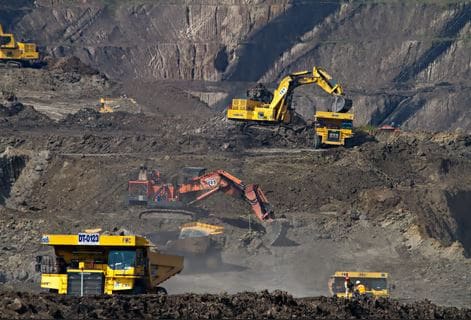Supreme Court Bench of Nine Judges Upholds States’ Authority to Impose Royalties on Mineral Taxes
A nine-judge Constitution bench headed by Chief Justice DY Chandrachud heard the case (File).
New Delhi:
The Supreme Court has affirmed the authority of state governments to levy royalty on mineral-bearing lands, recognizing their jurisdiction and powers in this area. This ruling stands to benefit mineral-rich states such as Odisha, Jharkhand, Bengal, Chhattisgarh, Madhya Pradesh, and Rajasthan, as it allows these states to impose additional charges on mining companies within their borders.
The landmark decision, delivered with an 8:1 majority by a bench led by Chief Justice DY Chandrachud, clarified that ‘royalty’ differs from ‘tax’. Justice BV Nagarathna provided the dissenting opinion.
Chief Justice Chandrachud, presenting the eight-judge majority opinion, stated, “Royalty is a contractual payment from lessee to lessor,” and noted that Parliament lacks the authority to tax mineral rights under Entry 50, List I.
“We hold that both royalty and debt rent do not meet the criteria of a tax,” the Chief Justice asserted.
The ruling also highlighted that the MMDRA (Mines and Minerals (Development and Regulation) Act) does not restrict states from taxing minerals.
Justice Nagarathna warned that allowing states to tax mineral rights could lead to “unhealthy competition among states for revenue… potentially exploiting the national market and undermining the federal system concerning mineral development.”
The central government had argued that only Parliament holds the power to impose taxes on minerals.
Right To Tax Affects Federal Balance?
In March, Chief Justice Chandrachud questioned Solicitor General Tushar Mehta, representing the centre, about whether this issue affects the constitutional distribution of power between the centre and states.
“Why does the statute not specify ‘this is the tax that the Union will charge, thus limiting the state’s power’… or something to that effect?” the court queried Mr. Mehta.
Mr. Mehta responded, “If such a tax is imposed, it would be invalid or unconstitutional. There is a statutory mechanism that specifies the amount and nothing more,” referencing the 300 percent and 500 percent rates set before the top court’s 1989 verdict.
“To ensure uniformity, the centre sets the tax rate,” he argued.
“It is a compelling argument that for tax uniformity, the centre can set rates… But the question is whether this infringes on the federal distribution of power,” the Chief Justice responded.
The court ultimately concluded that the Constitution does not grant Parliament exclusive control over mineral development, and that states also have the authority to regulate and develop mines and minerals.
“Should Not Dilute Taxable Areas”
In February, the court emphasized a “critical distinction” in this matter.
The court noted the limited areas where states can impose taxes under the Constitution, with most taxing authority given to the central government. “…states have very few areas of taxation, such as liquor. Therefore, these areas must not be diluted,” Chief Justice Chandrachud reasoned.
Mineral Rights Tax Case Background
Over three decades ago, a seven-judge bench ruled that the centre is the primary authority under the MMDRA. This decision arose from a dispute between the Tamil Nadu government and India Cements; the company had obtained a mining lease from the state and was paying royalty.
The state subsequently imposed a cess in addition to the royalty. The company contended that a cess on the royalty constituted a tax on royalty, which exceeded the state’s authority.
The top court at that time recognized royalty as a tax and declared “such a cess on royalty, being a tax on royalty, is beyond the competence of the state legislature.” However, 15 years later, a smaller bench in a similar case between the Bengal government and a mining company contradicted this by claiming a typographical error in the 1989 verdict. It stated that ‘royalty is a tax’ should be read as ‘cess on royalty is a tax’, asserting that the 1989 judgement held royalty is not a tax.
This dispute has persisted, with over 80 petitions filed, leading to the referral of the matter to the Chief Justice Chandrachud-led nine-judge bench to determine whether the 1989 verdict stands or if there was indeed a typographical error.

